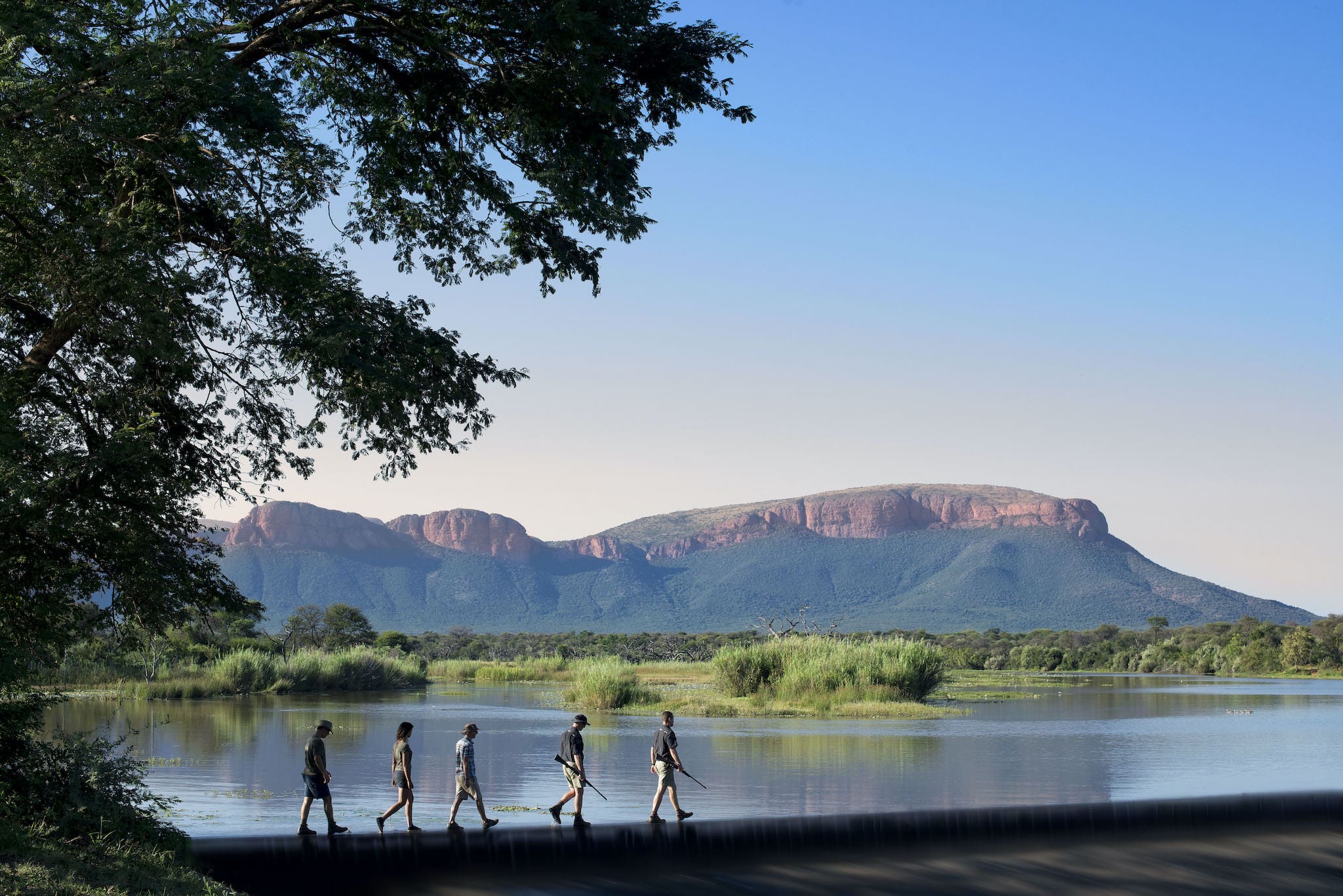Walking safaris, also known as bushwalks, are a more adventurous way of experiencing wildlife and landscapes. Exploring Africa on foot gives you a different perspective and makes you appreciate the smaller details, such as insects or plants you might've otherwise overlooked. Most notably, it instils a deep respect for Mother Nature and her nuances. However, it's only natural to have some questions if you've never gone on a walking safari. In this blog, our Travel Experts answer five of the most frequently asked questions we get from guests about walking safaris in Africa.

Get up-close and personal with wildlife on walking safaris, Image Credit: Mfuwe Lodge
Burning Questions About Walking Safaris in Africa
1. What Can I Expect On a Walking Safari?
Going on a walking safari gives you a different perspective at a slower pace than a traditional 4x4 safari. You also get opportunities to try to solve the bush's many mysteries, such as which animal broke those twigs, left that footprint, or just made that sound? With your guide at the helm, you map out the wildlife's activities and follow on their heels to track them down.
And then there's the silence... There's no rattling safari vehicle engine, just the sound of the ground crunching under your hiking boots. It's an all-encompassing experience where you focus only on your next step and enjoy Africa's natural beauty surrounding you.
In a world where we're constantly multitasking and distracted, it's an incredible experience that makes you feel alive. It also unlocks a deeper understanding of nature's delicate balance and rhythm.

Moments of wonder and joy on a walking safari, Image Credit: Silvan Safari
2. Are Walking Safaris Safe?
This is one of the most common questions we get asked about walking safaris. And, yes, walking safaris are safe. You have no reason to be concerned if you follow your guide's instructions. The guides and trackers can react quickly to ensure you and the animals remain safe. They know the bush like an elephant knows its trunk – it's their job!
Some Safety Tips
- While on a walking safari, you should always walk in single file, following your armed guide and tracker
- You'll have to remain completely silent, not only to savour the experience but also to allow the guides to be as alert as possible and to avoid scaring away skittish wildlife
- Whatever you do, don't panic or run! Your guides know best and will teach you some hand signals and precisely what to do in each scenario

Watching an elephant shuffle past is a humbling experience, Image Credit: Namiri Plains Camp
3. How Long Are Walking Safaris?
The duration of your walking safari depends on various factors, such as your group's fitness levels and the specific lodge offering the activity. You might walk from camp to camp or drive to a location, walk, and a vehicle will collect you from where you finish.
Regardless of the duration, walking safaris are generally slow with sufficient breaks and, therefore, suitable for most fitness levels.
4. What Should I Wear on a Walking Safari?
On any safari, neutral and khaki colours such as beige, browns and greens are best – leave the bright colours at home! Also, remember that dark colours like black will absorb the sun, leaving you feeling hot and bothered.
Since you'll walk in the sun without much shade, sunglasses, a wide-brimmed hat, and hiking boots help protect you against the elements. Comfort is key, so try to pack lightweight, flowy materials.

Open landscapes await you on a walking safari in the bush, Image Credit: Londolozi Private Game Reserve
5. Are Children Allowed on Walking Safaris?
This also depends on the area and lodge you visit. However, children older than 14-16 are generally welcome to go on walking safaris. Younger children are not allowed to participate as they are less likely to abide by rules and remain quiet when necessary.
Always check with your Rhino Africa Expert or the lodge when you book to avoid disappointment.

Walking in silence adds to the experience, Image Credit: Marataba Mountain Lodge
Are You Interested in Booking a Walking Safari?
And finally, the most important question: When can we start planning your walking safari experience in Africa?
We've been on walking safaris several times and in all areas, so we have all the first-hand experience and insights to make it the best possible experience. We also know the best lodges for walking safaris, so let our Travel Experts plan your ultimate African walking safari adventure!

